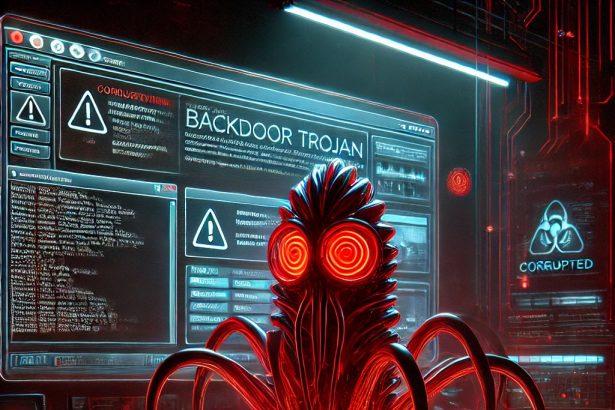JSCEAL is a dangerous information stealer malware campaign that has been actively targeting cryptocurrency users since March 2024. It spreads through deceptive online advertisements and fake MSI installers disguised as legitimate crypto apps. Once installed, JSCEAL silently steals browser data, wallet credentials, Telegram information, and other sensitive user data while maintaining stealth using sophisticated evasion techniques.
What sets JSCEAL apart is its use of compiled JavaScript and the Node.js runtime environment, which allows it to bypass many traditional detection systems. This malware is part of a growing trend where attackers weaponize legitimate technologies to develop flexible and modular malware campaigns.
Threat Summary Table
| Category | Details |
|---|---|
| Threat Type | Information Stealer / Remote Access Trojan (RAT) |
| Detection Names | Avast (Other:Malware-gen [Trj]); Combo Cleaner (Generic.MSIL.WMITask.H.2BADF324); ESET-NOD32 (Win32/GenCBL.FUU); Kaspersky (HEUR:Trojan.OLE2.Agent.gen); Symantec (Trojan Horse) |
| Symptoms of Infection | No visible symptoms; malware runs silently in the background. May cause increased CPU/network activity or unexpected background processes. |
| Distribution Methods | Fake advertisements and social media campaigns leading to malicious download links; fake MSI installers disguised as crypto applications. |
| Damage | Theft of wallet credentials, passwords, cookies, Telegram data, and browser autofill information. Can allow remote control and data exfiltration. |
| Danger Level | High – Targets cryptocurrency wallets and personal accounts with precision and stealth. |
| Removal Tool | SpyHunter |
Detailed Evaluation
How I Got Infected
The most common infection vector for JSCEAL is clicking on a fake advertisement that promotes a seemingly legitimate cryptocurrency tool such as Binance, MetaMask, or TradingView. These ads redirect users to cloned websites where they are prompted to download MSI installers. These installers are rigged with JSCEAL, which is deployed on the system while a legitimate-looking front is shown to the user to reduce suspicion.
What Does It Do
Once deployed, JSCEAL starts by executing a profiling script to gather system information using PowerShell. It identifies system configuration, user environment, installed programs, and security software. A second-stage payload is executed using Node.js, running malicious JavaScript code compiled via V8. This payload is capable of harvesting sensitive information, including:
- Crypto wallet credentials
- Browser cookies and session data
- Autofill passwords
- Telegram user data
- System information and screenshots
JSCEAL is modular, which allows attackers to add or update capabilities remotely. It can include features for keylogging, clipboard hijacking, remote shell execution, and wallet manipulation.
Should You Be Worried for Your System?
Absolutely. JSCEAL’s architecture and delivery method are designed to evade standard antivirus solutions. It can operate undetected for extended periods, collecting sensitive data and compromising your financial security. If you’ve installed crypto-related applications from non-official sources, your system may already be compromised. Immediate action is necessary to detect and remove the malware.
Manual Removal of Info-Stealers (For experienced users)
Step 1: Boot into Safe Mode with Networking
Info-stealers often run in the background, making removal difficult. Restarting in Safe Mode with Networking ensures they don’t load at startup.
For Windows 10/11
- Press Win + R, type msconfig, and hit Enter.
- In the System Configuration window, go to the Boot tab.
- Check Safe boot → Network.
- Click Apply > OK > Restart.
For Windows 7/8
- Restart your PC and press F8 before Windows loads.
- Select Safe Mode with Networking and press Enter.
Step 2: Stop Malicious Processes in Task Manager
- Press Ctrl + Shift + Esc to open Task Manager.
- Look for unusual processes (high CPU usage, unknown names).
- Right-click on them and select End Task.
Common Info-Stealer Process Names:
StealC.exeRedLine.exeVidar.exeClipBanker.exeRandomized system-like names
Step 3: Uninstall Suspicious Applications
- Press Win + R, type appwiz.cpl, and press Enter.
- Locate any suspicious or unknown programs.
- Right-click and select Uninstall.
Step 4: Delete Malicious Files and Registry Entries
Info-stealers often store files in hidden locations.
Delete Suspicious Files
- Open File Explorer and navigate to:
C:\Users\YourUser\AppData\LocalC:\Users\YourUser\AppData\RoamingC:\ProgramDataC:\Windows\Temp
- Delete any suspicious folders with randomized names.
Remove Malicious Registry Entries
- Press Win + R, type regedit, and hit Enter.
- Navigate to:
HKEY_LOCAL_MACHINE\Software\Microsoft\Windows\CurrentVersion\RunHKEY_CURRENT_USER\Software\Microsoft\Windows\CurrentVersion\Run
- Delete suspicious registry keys (e.g.,
StealerLoader,TrojanRun).
Step 5: Reset Browsers and Flush DNS
Since info-stealers target browsers, clearing stored credentials is essential.
Reset Browser Data
- Open Chrome, Edge, or Firefox.
- Go to Settings → Privacy & Security → Clear Browsing Data.
- Select Passwords, Cookies, and Cached files → Click Clear Data.
Flush DNS Cache
- Open Command Prompt as Administrator.
- Type the following commands and press Enter:bashCopyEdit
ipconfig /flushdns ipconfig /release ipconfig /renew - Restart your computer.
Step 6: Scan for Rootkits
Some info-stealers use rootkit techniques to stay hidden.
- Download Microsoft Safety Scanner or Malwarebytes Anti-Rootkit.
- Perform a deep system scan.
- Remove any detected threats.
Step 7: Change All Passwords & Enable 2FA
Since credentials may have been stolen, update passwords immediately for:
- Email accounts
- Banking/finance sites
- Social media accounts
- Cryptocurrency wallets
- Work and business logins
Enable two-factor authentication (2FA) for extra security.
Automatic Removal with SpyHunter (Recommended)
(For users who want a fast, reliable removal solution)
SpyHunter is an advanced malware removal tool designed to detect and eliminate info-stealers, trojans, and spyware.
Step 1: Download SpyHunter
Click Here to Download SpyHunter
Step 2: Install and Launch SpyHunter
- Open the SpyHunter-Installer.exe file from your Downloads folder.
- Follow the on-screen instructions.
- Launch SpyHunter after installation.
Step 3: Scan Your System for Info-Stealers
- Click “Start Scan” to perform a deep scan.
- SpyHunter will identify all malware-related files.
- Click “Remove” to eliminate detected threats.
Step 4: Enable SpyHunter’s Real-Time Protection
- Go to Settings → Enable Real-Time Protection.
- This prevents future infections.
How to Prevent Info-Stealer Infections
- Avoid Cracked Software & Torrents – These often contain malware.
- Use Strong, Unique Passwords – Consider a password manager.
- Enable Two-Factor Authentication (2FA) – Protects against account theft.
- Keep Windows & Software Updated – Security updates fix vulnerabilities.
- Beware of Phishing Emails – Do not click unknown links or attachments.
- Use a Reliable Anti-Malware Solution – SpyHunter detects and removes threats in real time.
Conclusion
JSCEAL is a highly sophisticated threat that focuses on exploiting the booming cryptocurrency market. By disguising itself as legitimate crypto tools and using JavaScript and Node.js to avoid detection, it steals credentials and wallet data without alerting users. If you suspect exposure, scanning your system with SpyHunter is critical to ensure the threat is eliminated quickly and effectively.




